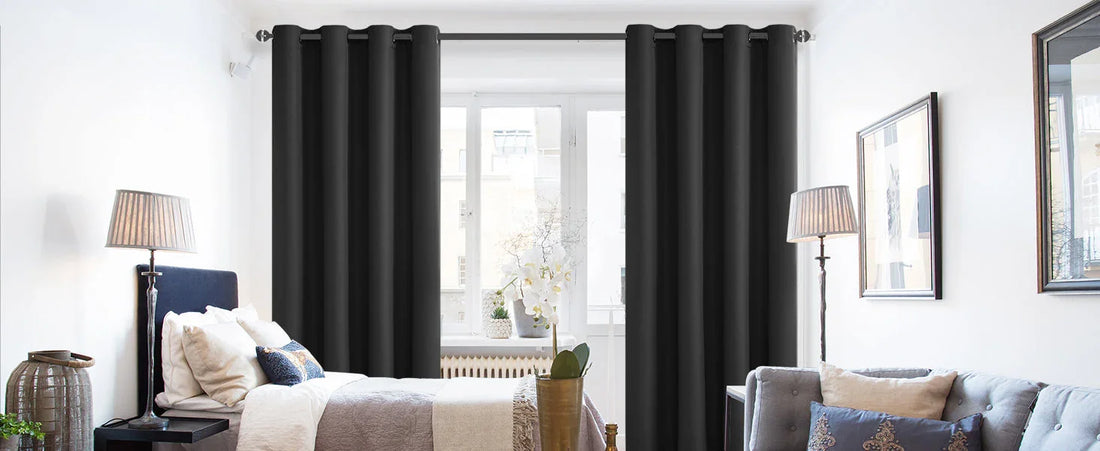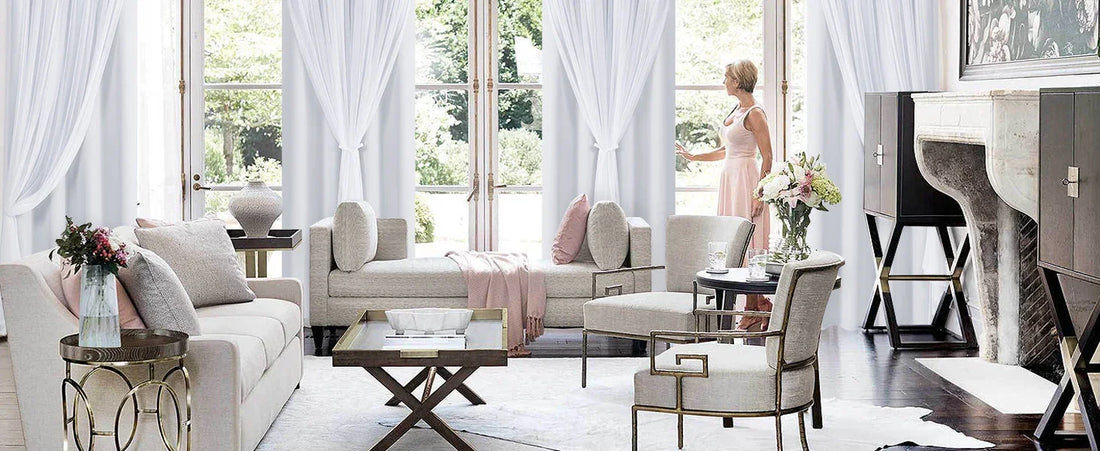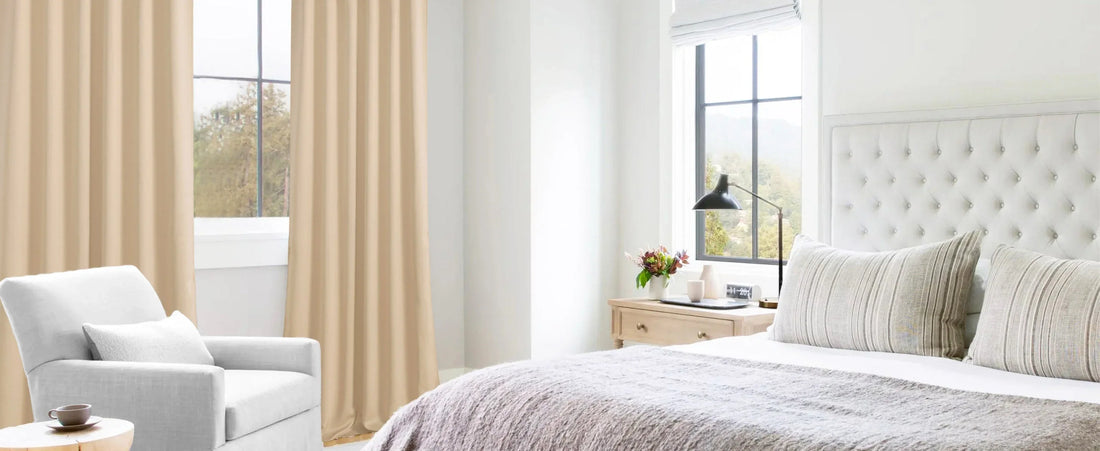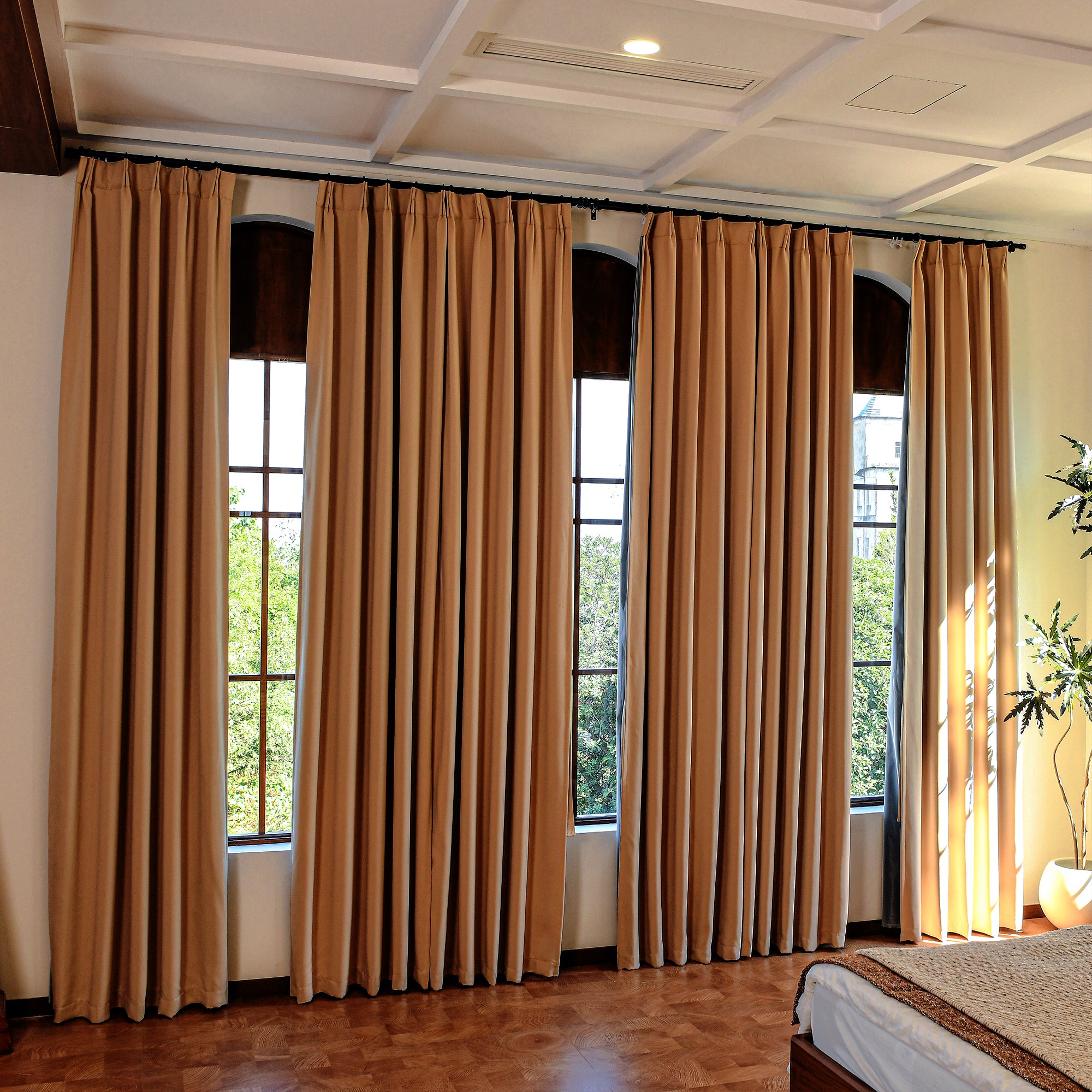Blackout curtains are the undisputed champions of sleep sanctuaries, home theaters, and temperature control. They plunge a room into blissful darkness, shield against intrusive glare, and add a layer of cozy insulation. But what happens when you want the light? When you crave the connection to the outside world or simply desire a more open, airy feel? Enter the humble yet transformative hero: the tieback.
Far more than just a functional accessory to hold fabric aside, the tieback is a critical design element. Its style, placement, and material fundamentally shape the look of your blackout curtains and the overall ambiance of your room. Choosing the right tieback design isn't an afterthought; it's the finishing touch that elevates your window treatment from merely practical to truly polished.
Beyond Function: The Multifaceted Role of Tiebacks
-
Mastering Light Control: This is the core function. Tiebacks allow you to harness the power of your blackout curtains strategically. Pull them wide open to flood the room with natural light and views during the day, then release them effortlessly for complete darkness when needed. They provide the flexibility that makes blackout curtains versatile year-round companions.
-
Preserving Fabric & Shape: Constantly shoving heavy blackout fabric aside can lead to unsightly creasing, stretching, or even damage over time. Tiebacks gently gather and hold the fabric in a defined position, minimizing stress on the material and helping maintain the curtain's elegant drape and pleats.
-
Sculpting Silhouette & Volume: Tiebacks dramatically alter the curtain's form. Placed high creates a dramatic, blousoned effect, maximizing the sense of height and fullness. Placed lower offers a more relaxed, classic drape. They define the "swag" or the cascade of fabric below the hold point.
-
Infusing Style & Personality: This is where tieback design truly shines. They are the jewelry for your curtains. A simple rope tieback whispers coastal casual, while a heavy, tasseled cord exudes traditional opulence. Sleek metal rings scream modern minimalism, and intricately carved wood brings rustic charm. They tie (pun intended!) your curtains directly into your room's decor theme.
-
Framing the View: By holding the curtains open symmetrically, tiebacks create a deliberate, elegant frame for your window and the view beyond, drawing the eye outward and enhancing the room's connection to the outside.
Delving into Tieback Design: Options Abound
The world of tieback design is surprisingly diverse. Choosing the right one involves considering material, style, and hardware:
-
Fabric Tiebacks:
-
Self-Fabric: Made from the same material as the curtains, creating a seamless, tailored, and luxurious look. Ideal for formal settings or when a cohesive aesthetic is paramount. They blend beautifully but offer less contrast.
-
Contrast Fabric: Using a different fabric (silk, velvet, linen, patterned) adds a pop of color, texture, or pattern. This is perfect for adding visual interest, defining a color accent, or introducing a complementary texture. Braided fabric cords fall into this category, offering a softer, textural alternative.
-
Design Impact: Fabric tiebacks generally offer a softer, more traditional or romantic feel. They can be wide bands or thinner cords, often finished with decorative ends like tassels, knots, or metal tips.
-
-
Rope & Cord Tiebacks:
-
Natural Fibers: Jute, sisal, cotton rope – bring organic texture, warmth, and a relaxed, coastal, bohemian, or rustic vibe. They pair beautifully with linen or textured blackout fabrics.
-
Synthetic & Braided: Offer durability and a wider range of colors. Braided designs add visual complexity. Often feature decorative tassels, beads, or metal aglets (end caps).
-
Design Impact: Excellent for adding texture and an artisanal, casual, or globally-inspired touch. Tassels add movement and traditional flair.
-
-
Metal Tiebacks:
-
Materials: Brass (polished, satin, antique), Iron (wrought, black), Nickel (polished, brushed), Chrome. Each finish conveys a different mood.
-
Styles:
-
Hooks: Simple, curved hooks (single or double arm) are minimalist and versatile.
-
Rings: Circular or shaped rings offer a clean, modern look. Often used with a fabric loop sewn onto the curtain.
-
Arms/Scrolls: More ornate designs featuring intricate scrollwork or geometric shapes. Common in traditional and transitional settings.
-
Contemporary Shapes: Sleek geometric forms (cubes, cylinders, angular hooks) for modern and minimalist spaces.
-
-
Design Impact: Metal tiebacks bring structure, shine, and a defined stylistic statement. They range from ultra-sleek to highly ornate, significantly influencing the room's formality and era.
-
-
Wood & Acrylic Tiebacks:
-
Wood: Carved, turned, or simple polished wood brings warmth and organic texture. Suits rustic, farmhouse, Scandinavian, or eclectic styles. Can be stained or painted.
-
Acrylic/Lucite: Offer a modern, translucent, or brightly colored option. Creates a lighter, more playful, or futuristic look, especially effective in contemporary spaces.
-
Design Impact: Wood adds natural warmth and earthiness. Acrylic offers a bold, modern, or whimsical touch with less visual weight than metal.
-
Choosing the Perfect Tieback Design: Key Considerations
-
Curtain Weight & Fabric: Heavy blackout curtains demand sturdy tiebacks. Delicate fabric cords might struggle; robust metal hooks, thick ropes, or wide fabric bands are safer. Lightweight blackout liners paired with sheers can handle more delicate options.
-
Room Style & Decor:
-
Traditional/Formal: Opt for ornate metal arms, heavy tasseled cords, self-fabric tiebacks, or carved wood.
-
Modern/Minimalist: Choose sleek metal hooks or rings, simple rope without tassels, geometric acrylic, or subtle fabric bands.
-
Coastal/Boho: Embrace natural rope, woven textures, braided cotton, or simple wood.
-
Rustic/Farmhouse: Think thick jute rope, wrought iron hooks, or chunky turned wood.
-
Eclectic: Have fun! Mix materials or choose a unique sculptural piece as a focal point.
-
-
Functionality: How easily do you need to open and close the curtains? Hook-and-ring systems are very quick. Fabric tiebacks with loops might require slightly more manipulation. Consider ease of use.
-
Placement: The height significantly affects the look. A good starting point is roughly one-third of the way up the curtain length. Experiment! Higher placement feels grander; lower feels more relaxed. Ensure symmetry on either side of the window.
-
Scale & Proportion: The tieback should be proportionate to the curtain's fullness and the window's size. Heavy, full curtains need substantial tiebacks. Small windows look best with less bulky options.
Installation Tips:
-
Secure Mounting: Use sturdy wall anchors, especially for heavy curtains. The bracket should be screwed securely into the wall stud or a reliable anchor.
-
Positioning: Mark the desired height on the wall before drilling. Hold the curtain back to visualize the drape. Typically place the bracket 4-6 inches out from the window trim and at the chosen height.
-
Consistency: Ensure tiebacks on either side of a window (or across multiple windows) are mounted at the same height and distance from the trim for a balanced look.
Conclusion: The Defining Detail
Blackout curtains provide the essential foundation of darkness and comfort. But it's the tieback that unlocks their daytime potential and defines their character. Choosing the right tieback design – whether a plush self-fabric band, a gleaming brass hook, a chunky jute rope, or a sleek acrylic ring – is an integral part of your interior design scheme. It's the detail that sculpts the light, frames the view, protects your investment, and injects a powerful dose of style. Don't underestimate the power of the perfect cinch; invest thought in your tieback design, and watch your blackout curtains transform from purely functional to flawlessly finished.






